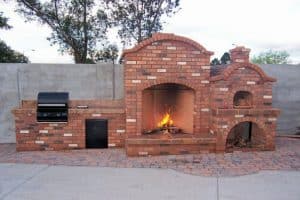Why should you use brick in your next remodeling or construction project?
Because brick is the most sustainable green building material made.
Given the significance buildings have on energy consumption, brick should be part of a comprehensive green strategy because today’s brick includes:
- Inherently Natural Ingredients. Brick is predominantly made from clay and shale, which are among the most abundant materials available on earth.
- Countless Recycling Options. Brick can be salvaged, crushed brick for sub-base materials, and chipped brick for permanent landscaping mulch.
- Minimal Waste. Virtually all of the mined clay is used in the manufacturing process making the recycling and waste containment unequalled by any other building material. In fact, over 80% of our manufacturers re-use their own fired waste material or convert it into other products. And if you decide to pitch it, there is no special handling required because brick is simply earth, so it’s inert.
- Brick is the first masonry material that can attain a “Certificate of Environmental Claims” from a third party source. The National Brick Research Center, an organization of the College of Engineering andcScience at Clemson University, has developed a standard to verify the amount of recycled content in brick, the utilization of renewable energy in the firing process, and the reduction in the amount of resources used to manufacture brick.
- Environmentally Friendly Manufacturing Processes. More than 80% of brick kilns are fired with natural gas, and numerous plants use fuels of bio-based materials from other industrial applications and waste products. Energy sources include methane gas from landfills and sawdust from furniture manufacturers.
- According to recent statistics, the impact of residential and commercial buildings account for:
- 65.2% of electricity consumption
- >36% of the country’s “primary energy use”
- 30% of total US greenhouse gas emissions
- 136 million tons of demolition and construction waste in the U.S. That equates approximately 2.8 lbs per person per day
Here’s an outdoor project to get you inspired!

Call us today for all of your masonry needs 503-758-4710

